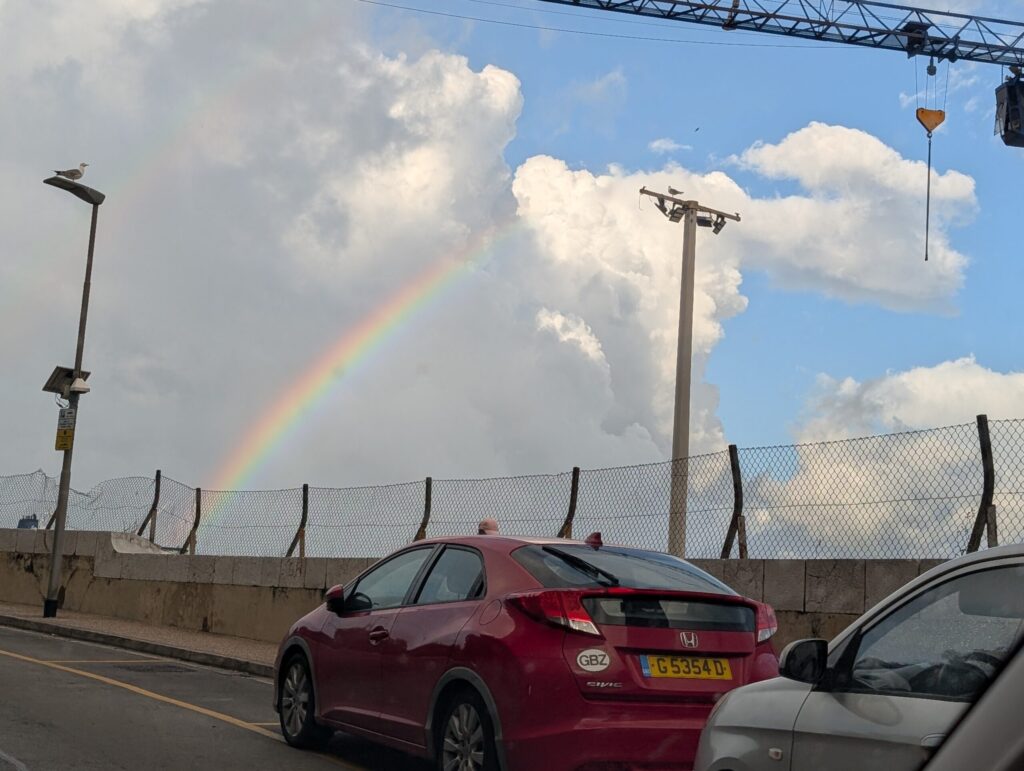I had wanted to go to Gibraltar since I saw the silhouette of the island in the 1070’s Prudential insurance commercial and a certificate on my uncle’s “Order of the Rock” for crossing through the strait in the Navy.
Gibraltar, a unique British enclave at the southern tip of Spain, offers a blend of natural beauty, rich history, and accessible attractions, making it an ideal destination for travelers seeking a memorable day trip.
Arriving in Gibraltar – you can fly into Gibraltar from several locations, by cruise ship, drive, or walk over the border. All of the articles I read suggested that if you were driving, you should leave your car at the border in Spain and cross on foot, as parking can be challenging within Gibraltar itself. From the border, local buses or taxis can easily take you to the city center.
If you prefer not to walk, several operators offer guided minibus or taxi tours that cover all major sites with minimal walking. These tours are especially recommended for visitors as they navigate the steep and narrow roads efficiently and provide informative commentary. Booking in advance is advised during busy periods.
We visited Gibraltar as part of a very long private day trip from Malaga as a stopover before the ferry boat to Morocco. Our guide drove onto the island, allowing us to complete a full loop.
This was our first view of the island as we approached La Linea de la Concepcion, the Spanish city where we did the border crossing.
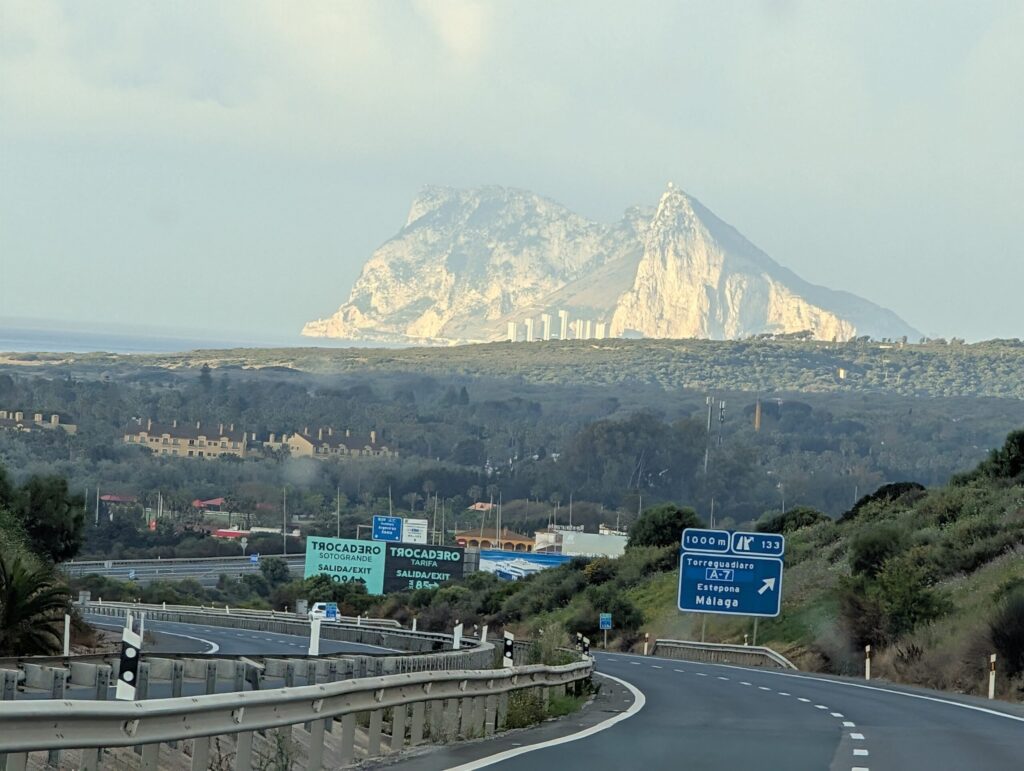
What Stood Out
No Passport Stamp – this was a significant disappointment, as I had hoped it might feature the silhouette. However, an agreement between Gibraltar and Spain stipulates that passports are not stamped unless you arrive by air, and we arrived by car. It was pretty simple. We drove up to the Spanish agent, who looked at our passports and told us to move to the next stop, which was British Immigration. They did the same and welcomed us.
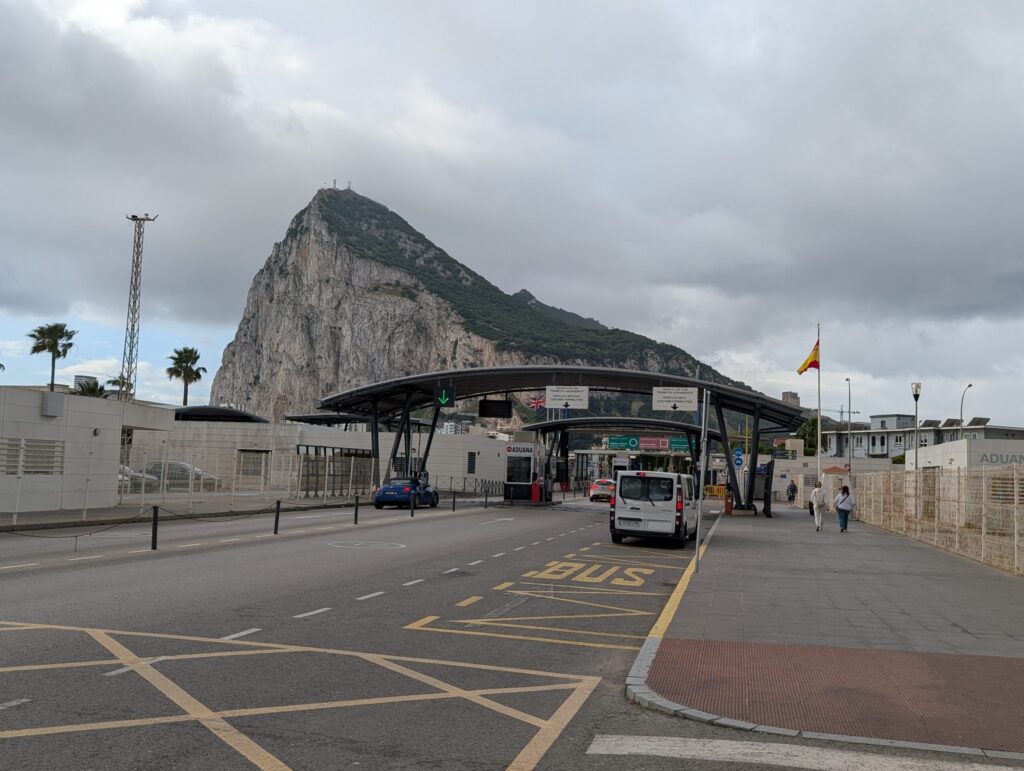
Accelerated Trip – The original plan allowed for a few hours on the island, which would have allowed us to take the cable car up the mountain. Unfortunately, an accident delayed our driver in the morning, and another accident on the way down, combined with rain and four cruise ships in port, meant we didn’t have time to go up the mountain. I had no expectations beyond visiting and seeing it firsthand.

Moorish Castle and Old Town – the Moorish Castle on the hill near the Old Town offers a glimpse into Gibraltar’s medieval past and panoramic city views. The old town’s architecture reflects a blend of Genoese, Portuguese, Spanish, Moorish, and British influences.
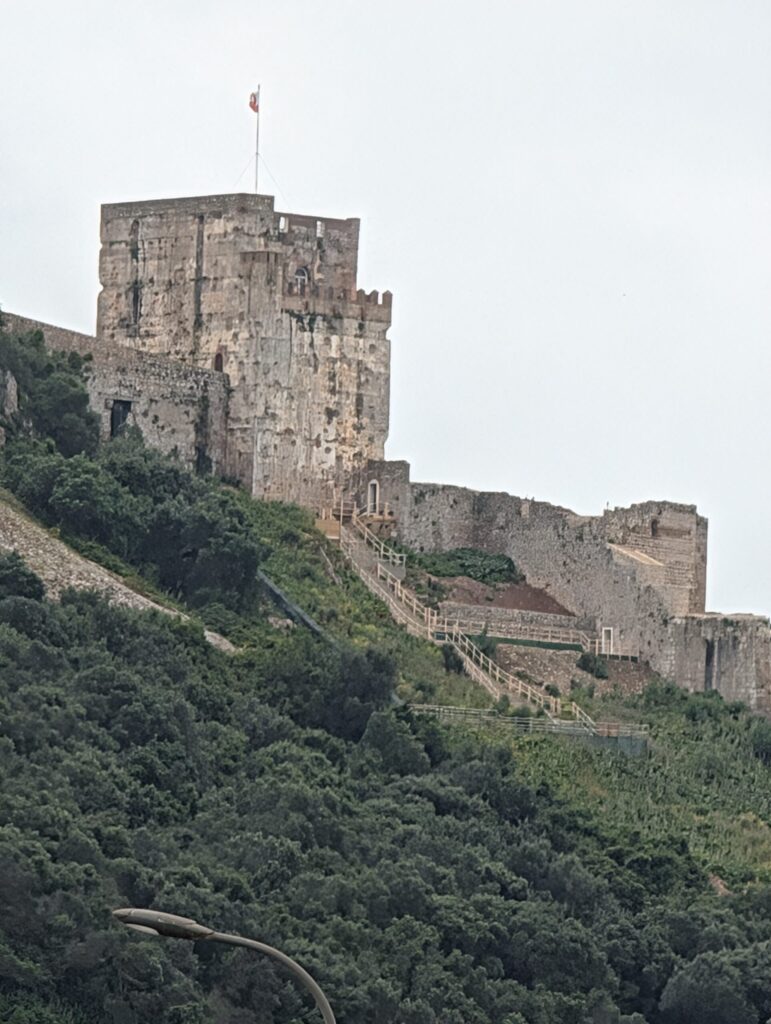
Europa Point – this is the southernmost tip of Gibraltar. Here, you’ll find the iconic lighthouse, the impressive Ibrahim-al-Ibrahim Mosque, and sweeping views across the sea to Africa.
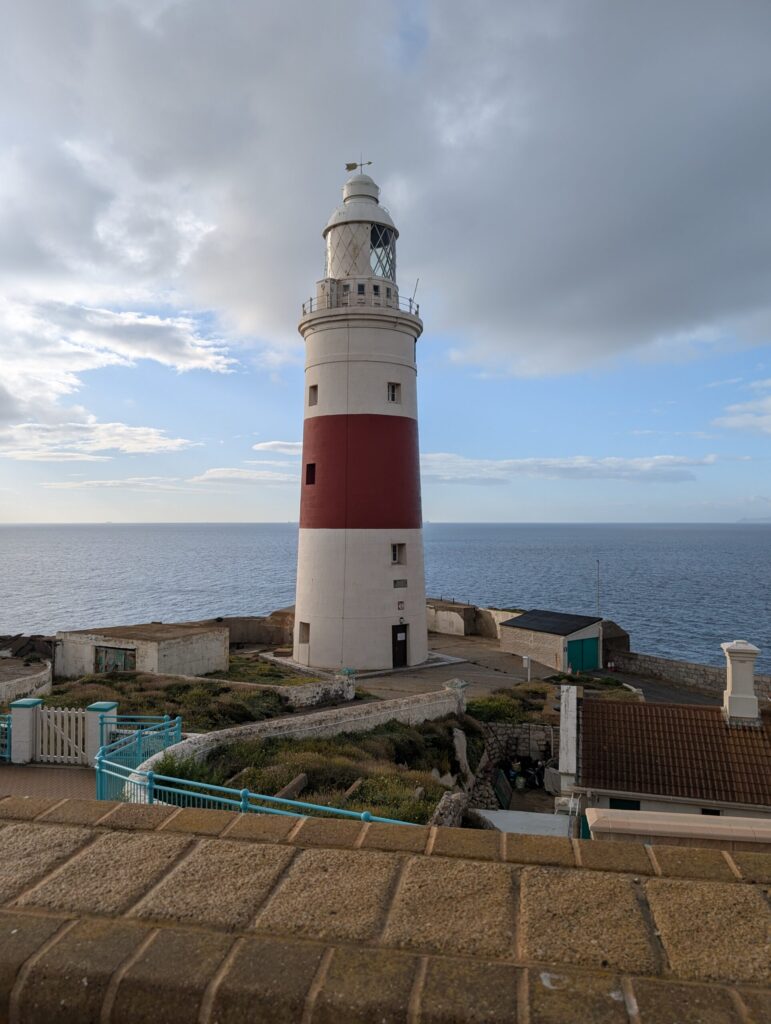
Ibrahim-al-Ibrahim Mosque – It is the southernmost mosque in Europe and is the largest in a non-Muslim country.
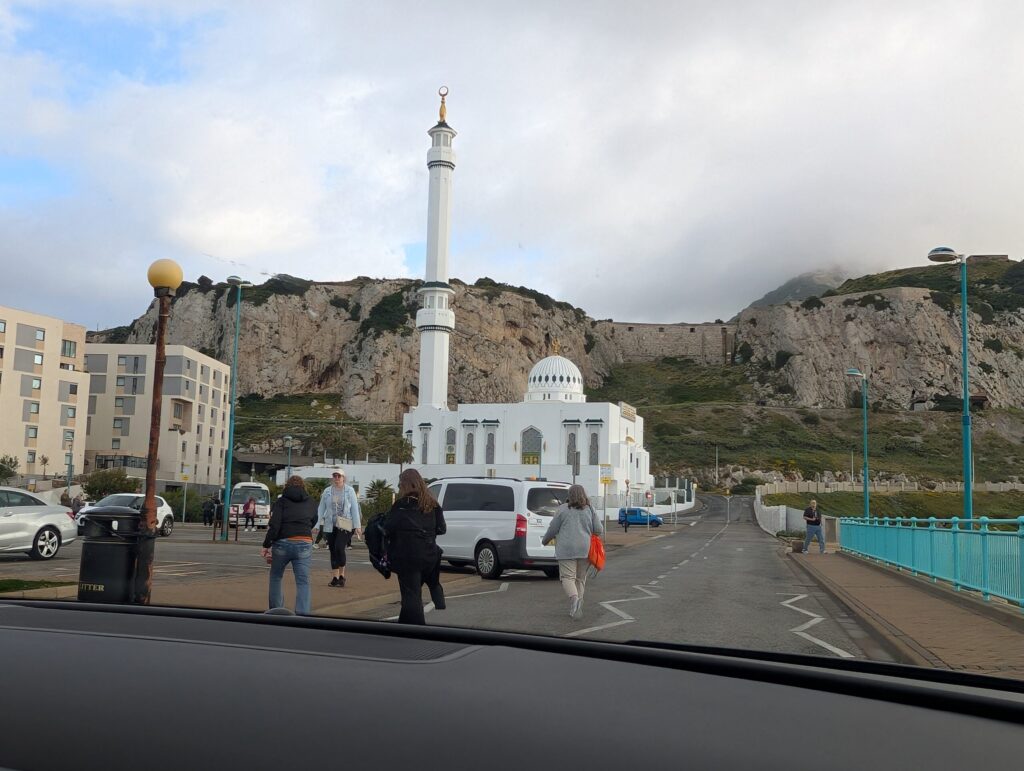
Wellington Front – Wellington Front is part of the long wall of the fortification built by the Moors and subsequently modified by the Spanish and British.

Catalan Bay/ La Caleta is a picturesque and vibrant coastal fishing village and bay located on the eastern side of Gibraltar. It’s also known as “Little Genoa” because its inhabitants, who were Genoese and Catalan fishermen, assisted the Dutch with fortifications. Our guide told us it is nearly impossible to move into this area; you have to be related to someone and inherit the property or marry into the family.
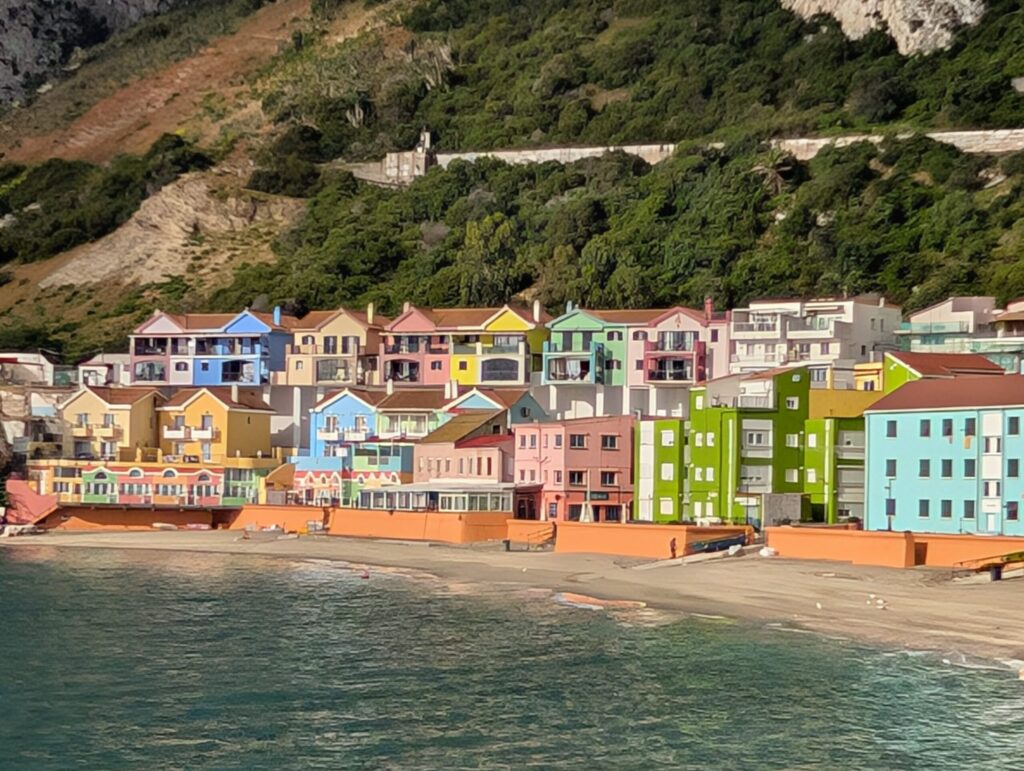
Barbary Macaques – While we did not go up to the top of the rock, it seems you cannot write about Gibraltar without mentioning the monkeys. The Nature Reserve is home to Europe’s only wild monkeys, the Barbary Macaques.
Europa Waterfall – just past Europa point is the aptly named Europa waterfall. Due to all of the rain, we were able to see cascading down the rocky cliffs out of a carved hole in the mountain.
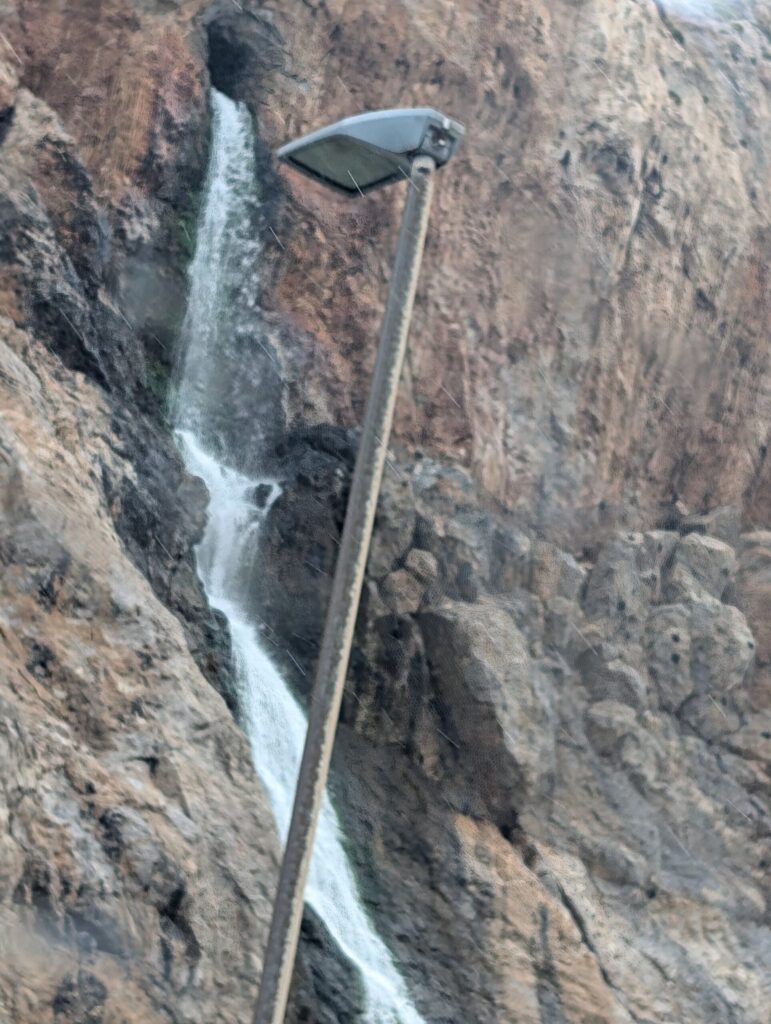
Rainbow – As we approached Europa Point, the rain stopped, and we were presented with an amazing rainbow.
